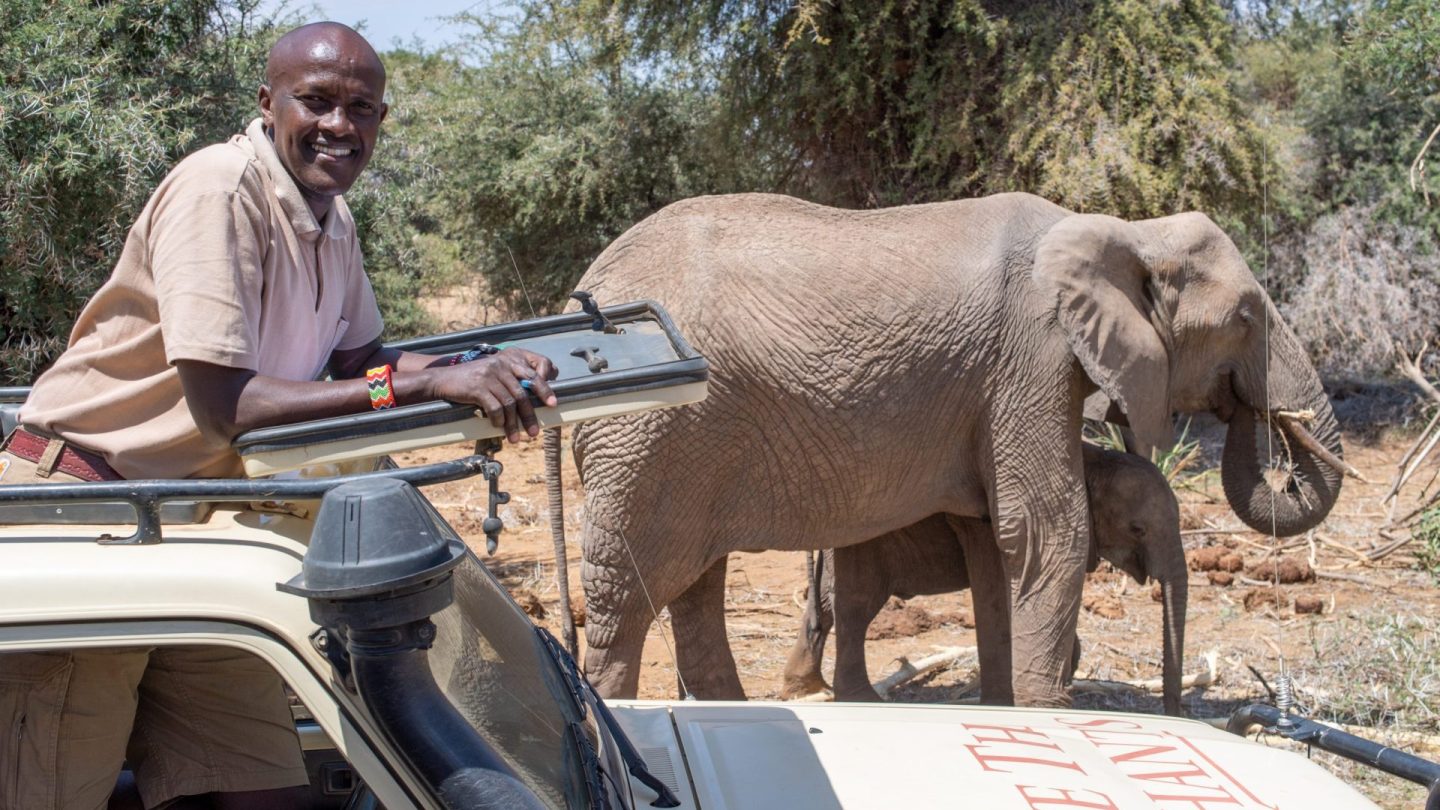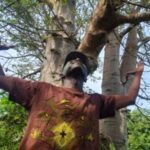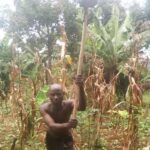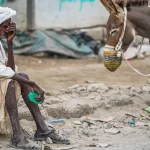The river was deep and unpredictable, and infested with crocodiles
I live in Samburu, in northern Kenya, but I was raised even farther north, on the border of Ethiopia. Where I grew up, there were elephants living in the wild. I was fascinated by these creatures. They’re so social, complex and compassionate; their size breathtaking. I became obsessed with elephants and decided to carve out a career working with them.
Now, working in the field for Save the Elephants in Kenya, I am mostly based in Samburu National Reserve – a 165km2 protected park – recording details of the population and leading collaring operations. We deploy GPS trackers around wild elephants’ necks, so we can monitor their movements.
More than 1,000 known elephants use the reserve. Some are residents, others migrate. So, we see some regularly, while others visit once every few years. You come to know some well, particularly the big characters.
One of those elephants was Rommel. We first identified him in 2008. That summer, I was one of the first on the scene when Rommel crushed a colleague’s Land Cruiser while fighting another bull elephant. Rommel didn’t come often, but when he did turn up, we’d have to be prepared. He was gigantic and aggressive, weighing about six tonnes.
In May 2009, in the middle of the wet season, Rommel appeared again. And it was his turn to be collared. We sent three cars out to search for him.
There’s a river, the Ewaso Nyiro, running through the park where many elephants congregate in the mornings. At 10.30am, scouring the groups around the river, one of my colleagues clocked Rommel. With a big cut on his right ear, he was flirting with a female.
Rommel was darted – a tranquilliser was carefully shot into his rump so we could safely place a collar on him. Normally it takes seven minutes for the sedative to hit, but for a bull of Rommel’s size it can take longer.
When the dart hit him, he turned away, heading in an unexpected direction. But if any of us had tried to stop him, he might have crushed our car in an instant. We hoped the female on heat would encourage him to stay. But she also attracted lots of young male elephants, desperate for attention.
So, when Rommel started wobbling, these younger elephants made their move. Rommel, not wanting to lose his mate, attempted to chase her. He was in the middle of crossing the river when the drugs hit. He collapsed, thrashing around, into the water.
I jumped out of my vehicle: Rommel drowning would be a disaster. Only by lifting his trunk and stopping it from being submerged in the river, could we ensure his survival. The problem was the river was deep and unpredictable, and infested with crocodiles.
In a split second, I decided to act. I was young and had no family at the time. I jumped in and lifted his heavy, twitching trunk from the water.
The team attempted to fit him with a GPS collar, but we discovered that we didn’t have one big enough. When in musth – periods when they have high levels of testosterone – elephants of his size often have large, swollen necks. It helps their mating strategy.
We couldn’t risk keeping him there while we created a bigger collar. So I struggled on, holding his trunk aloft with all my strength, as an antidote to the tranquilliser was delivered.
I stood there for at least half an hour. I tried hard to keep my cool as my arms became exhausted. Small fish swam past my legs. Each time, panic hit: was this one a crocodile? There was also a risk other elephants might come and cause trouble in the water.
As soon as his ears started to flap – a sign of consciousness returning – I dropped his trunk and moved to safety. Within a couple of minutes, he was back to business, up and off to chase after females. That was one of my proudest moments.
We never did fit Rommel with a collar. He did not come back to Samburu. That’s uncommon for elephants – this region is a well-known place for mating. In those years, there was a poaching pandemic. Our suspicion is that he was probably killed by illegal hunters. That’s why we continue with our work – doing all we can to ensure elephants are protected.
David Daballen was a finalist in the Tusk Award for Conservation in Africa 2022.














